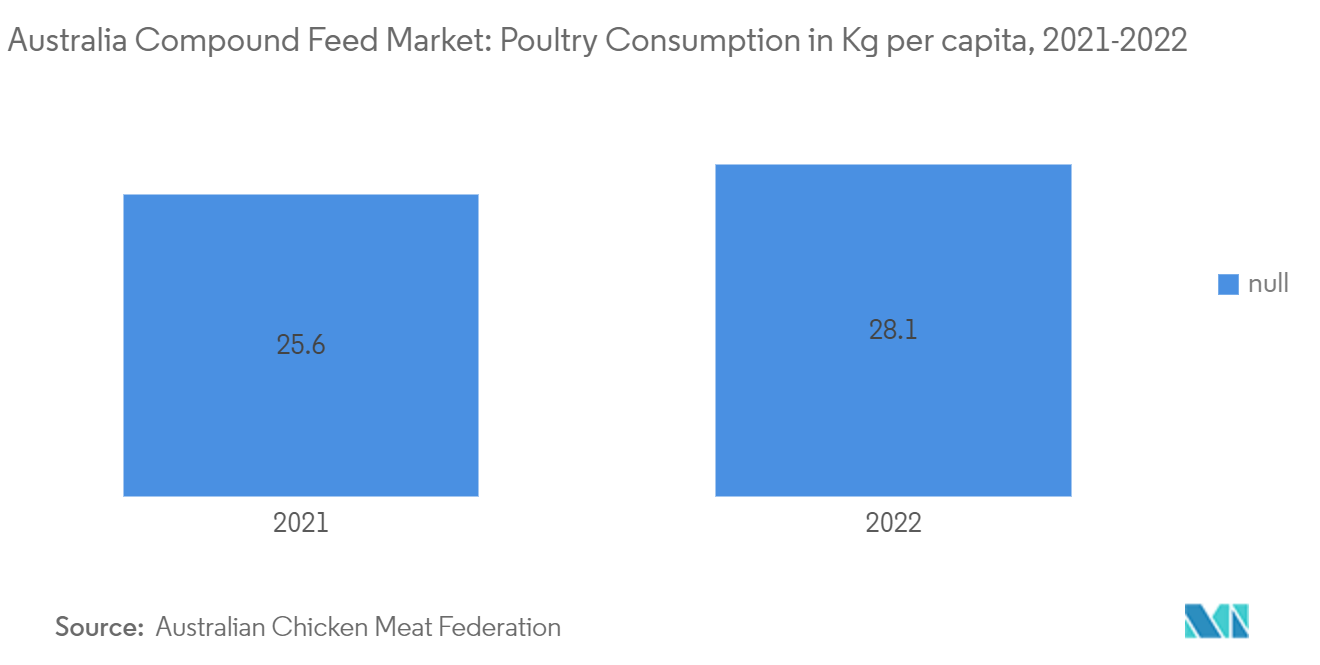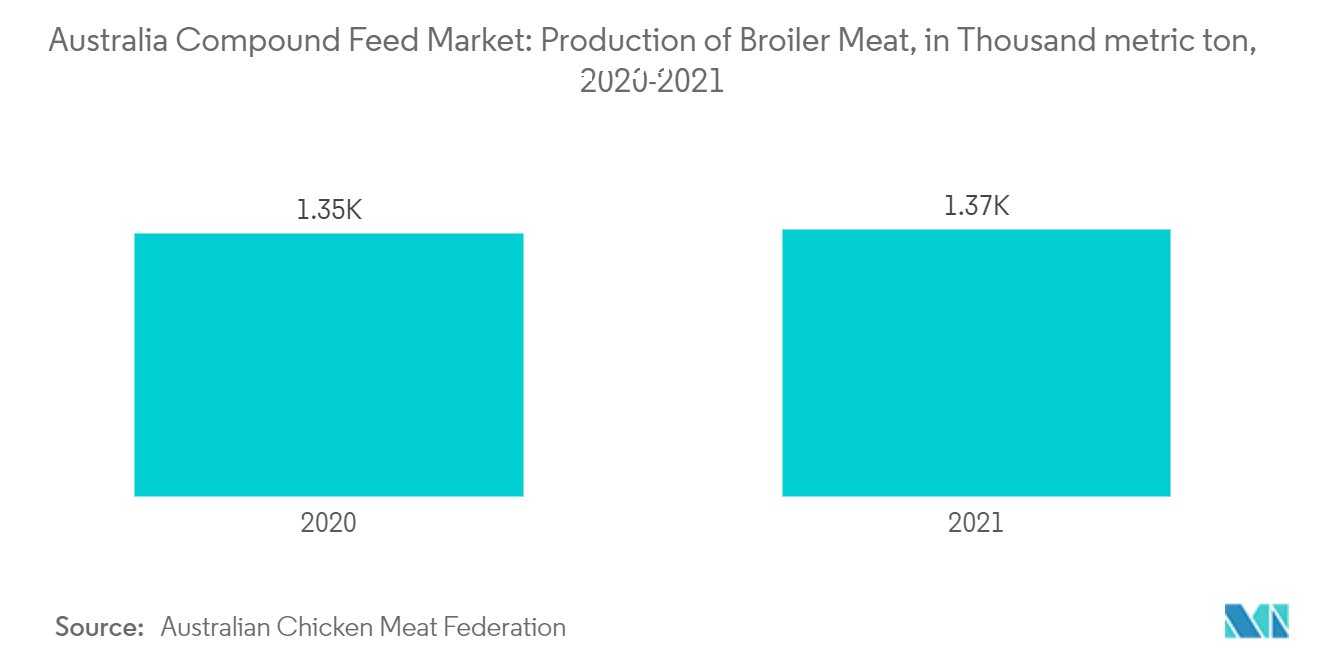Market Trends of Australia Compound Feed Industry
This section covers the major market trends shaping the Australia Compound Feed Market according to our research experts:
Increasing Demand for Meat Products
- With Australia's rising population and income over the past few years, there has been a significant rise in meat consumption in the country over the same period. Each year, Australians consume 47.46 kg of chicken per person, making it the most consumed animal protein, surpassing beef, lamb, and hog.
- Increased poultry consumption has ensured strong downstream demand and boosted industry revenue over the period. Retail poultry prices have declined over the period, while many substitute products, such as fish and seafood, beef, and lamb, have risen. Consequently, the relatively lower price of poultry in retail outlets has encouraged more consumers to purchase and consume poultry over the past five years.
- In addition, rising health consciousness has driven demand for leaner protein sources, such as poultry, benefiting the industry. Increasing life expectancy and limited availability of land and water resources for animal feed production and increasing use of these resources for food and ethanol production are increasing the demand for animal feed in the Australian meat industry.
- The seafood demand in Australia has increased considerably over the last five years. Currently, Australia's consumer demand for seafood exceeds the supply from domestic production and continues to grow. Domestic aquaculture has the potential to expand to help meet domestic and international demand significantly.

Broiler Chickens Dominate the Animal Type Segment in Australia
- Chicken consumption in Australia has significantly risen over the past 20 years, while red meat consumption continues to decline. Australian poultry meat is mostly farmed for the home market, with relatively little shipped internationally. In Australia, there are about 800 chicken meat farmers. New South Wales is the leading producer, accounting for 32% of the total national output.
- In 2021, Queensland had over 200 chicken meat farms and 13 poultry processors recognized by Safe Food Production Queensland. To reduce transit stress on birds, poultry meat farms are typically placed within 200 kilometers of a processing facility. Many of Australia's big poultry processors are located within a 50-kilometer radius of capital cities, where labor is simpler, and distribution and transportation costs may be lowered.
- Queensland is the second largest producer, accounting for around 21% of Australia's chicken meat production and providing more than USD 580 million to the state's economy. The business is still one of Queensland's fastest-growing. Redland Bay (south of Brisbane) and adjacent locations in the south, southwest, and north of Brisbane are major chicken meat farming regions in Queensland. Smaller areas of chicken meat production may also be found at Mareeba, Far North Queensland, and near Byron Bay, NSW, close across the border.


